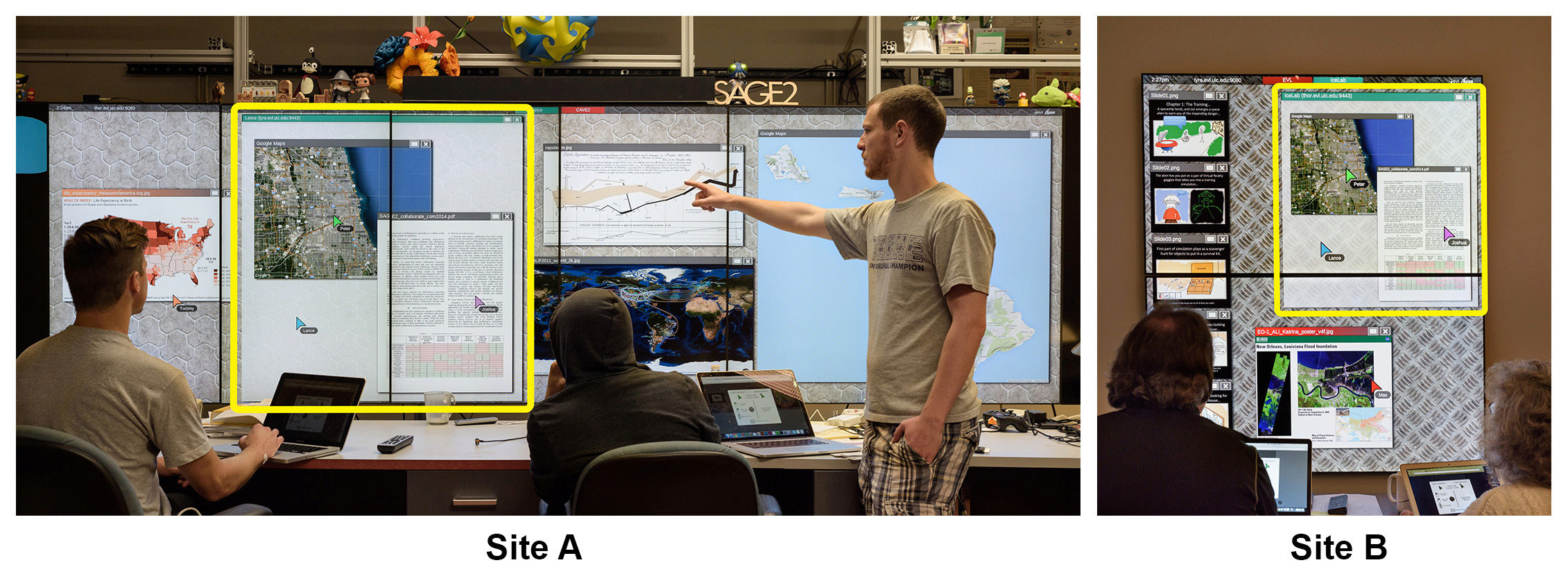Data-Intensive Remote Collaboration using Scalable Visualizations in Heterogeneous Display Spaces
August 21st, 2015
Categories: User Groups, Tele-Collaboration

About
PhD candidate Tommy Marrinan defends his dissertation on remote collaboration research.
Committee: Andrew Johnson (chair and advisor)
Luc Renambot, Angus Forbes, Steve Jones, Jason Leigh
Abstract:
Commercial software, such as Google Hangouts, Skype, and WebEx, has made significant strides to enhance remote collaboration between single users. Other systems, such as Oblong’s Mezzanine, have enabled groups to collaborate over distance, but only when the display environment is cloned in all locations. These configurations are not always practical in the real world since collaboration is often interdisciplinary, with each discipline having a unique work environment suited for its needs. I have used SAGE2, the Scalable Amplified Group Environment, as a platform to implement a scalable solution for viewing and interacting with arbitrary content, and developed and tested various methods of synchronizing data across multiple sites. SAGE2 is the successor to SAGE, the Scalable Adaptive Graphics Environment, which is a middleware to display and interact with an assortment of data-intensive information from multiple sources on displays of arbitrary size. In other words, SAGE2 allows collaborators to use any Scalable Resolution Shared Display (SRSD) from a single monitor to a large tiled display wall to act as a seamless window manager for applications such as a high-resolution image viewer, interactive mapping software, 3D model viewer, and multi-user notepad.
Unlike video and audio, data-conferencing with fully synchronized content may not always be ideal. Groups or individuals may be analyzing different portions of the same data, and therefore desire asynchronous interactions in certain situations. I have conducted a user study comparing three techniques of data-conferencing. The first technique was data-pushing, sending unsynchronized documents between locations, along with two video streams - one of 2 the collaborators and one of the SRSD. The second technique was data-duplication, where one section of the SRSD contained fully synchronized versions of all data-conferencing content and a second portion of the SRSD contained local unsynchronized copies of the data-conferencing content. The final technique was to use advanced data-synchronization options, where collaborators chose which aspects of each shared application were synchronized and which were controlled independently. While I used SAGE2 to develop and test these principles, the applications of the knowledge gained can broadly apply to data-conferencing software in general.